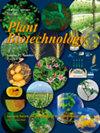4-Phenylbutyric acid promotes plant regeneration as an auxin by being converted to phenylacetic acid via an IBR3-independent pathway.
IF 1.1
4区 生物学
Q4 BIOTECHNOLOGY & APPLIED MICROBIOLOGY
引用次数: 4
Abstract
4-Phenylbutyric acid (4PBA) is utilized as a drug to treat urea cycle disorders and is also being studied as a potential anticancer drug that acts via its histone deacetylase (HDAC) inhibitor activity. During a search to find small molecules that affect plant regeneration in Arabidopsis, we found that 4PBA treatment promotes this process by mimicking the effect of exogenous auxin. Specifically, plant tissue culture experiments revealed that a medium containing 4PBA enhances callus formation and subsequent shoot regeneration. Analyses with auxin-responsive or cytokinin-responsive marker lines demonstrated that 4PBA specifically enhances AUXIN RESPONSE FACTOR (ARF)-dependent auxin responses. Our western blot analyses showed that 4PBA treatment does not enhance histone acetylation in Arabidopsis, in contrast to butyric acid and trichostatin A, other chemicals often used as HDAC inhibitors, suggesting this mechanism of action does not explain the observed effect of 4PBA on regeneration. Finally, mass spectroscopic analysis and genetic approaches uncovered that 4PBA in Arabidopsis plants is converted to phenylacetic acid (PAA), a known natural auxin, in a manner independent of peroxisomal IBR3-related β-oxidation. This study demonstrates that 4PBA application promotes regeneration in explants via its auxin activity and has potential applications to not only plant tissue culture engineering but also research on the plant β-oxidation pathway.4-苯基丁酸作为一种生长素,通过ibr3独立通路转化为苯乙酸,促进植物再生。
4-苯基丁酸(4PBA)被用作治疗尿素循环障碍的药物,并且也被研究为通过其组蛋白脱乙酰酶(HDAC)抑制剂活性发挥作用的潜在抗癌药物。在寻找影响拟南芥植物再生的小分子的过程中,我们发现4PBA处理通过模拟外源生长素的作用来促进这一过程。具体而言,植物组织培养实验表明,含有4PBA的培养基可以促进愈伤组织的形成和随后的芽再生。对生长素反应或细胞分裂素反应标记系的分析表明,4PBA特异性增强生长素反应因子(ARF)依赖性生长素反应。我们的蛋白质印迹分析表明,与丁酸和曲霉菌素A(通常用作HDAC抑制剂的其他化学物质)相比,4PBA处理不会增强拟南芥中的组蛋白乙酰化,这表明这种作用机制不能解释观察到的4PBA对再生的影响。最后,质谱分析和遗传学方法发现,拟南芥植物中的4PBA以独立于过氧化物酶体IBR3相关β-氧化的方式转化为苯乙酸(PAA),这是一种已知的天然生长素。本研究表明,4PBA的应用通过其生长素活性促进外植体的再生,不仅在植物组织培养工程中,而且在植物β-氧化途径的研究中都有潜在的应用。
本文章由计算机程序翻译,如有差异,请以英文原文为准。
求助全文
约1分钟内获得全文
求助全文
来源期刊

Plant Biotechnology
BIOTECHNOLOGY & APPLIED MICROBIOLOGY-PLANT SCIENCES
CiteScore
2.90
自引率
18.80%
发文量
45
审稿时长
6-12 weeks
期刊介绍:
Plant Biotechnology is an international, open-access, and online journal, published every three months by the Japanese Society for Plant Biotechnology. The journal, first published in 1984 as the predecessor journal, “Plant Tissue Culture Letters” and became its present form in 1997 when the society name was renamed to Japanese Society for Plant Cell and Molecular Biology, publishes findings in the areas from basic- to application research of plant biotechnology. The aim of Plant Biotechnology is to publish original and high-impact papers, in the most rapid turnaround time for reviewing, on the plant biotechnology including tissue culture, production of specialized metabolites, transgenic technology, and genome editing technology, and also on the related research fields including molecular biology, cell biology, genetics, plant breeding, plant physiology and biochemistry, metabolic engineering, synthetic biology, and bioinformatics.
 求助内容:
求助内容: 应助结果提醒方式:
应助结果提醒方式:


